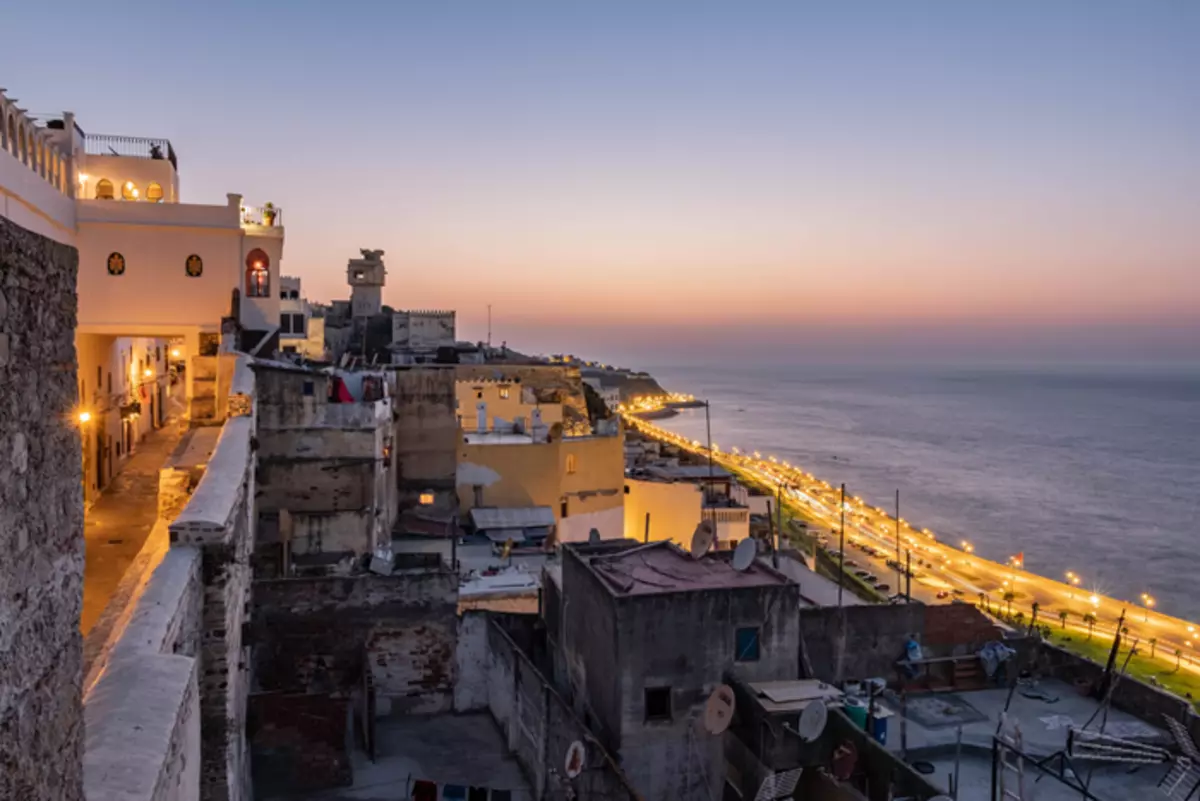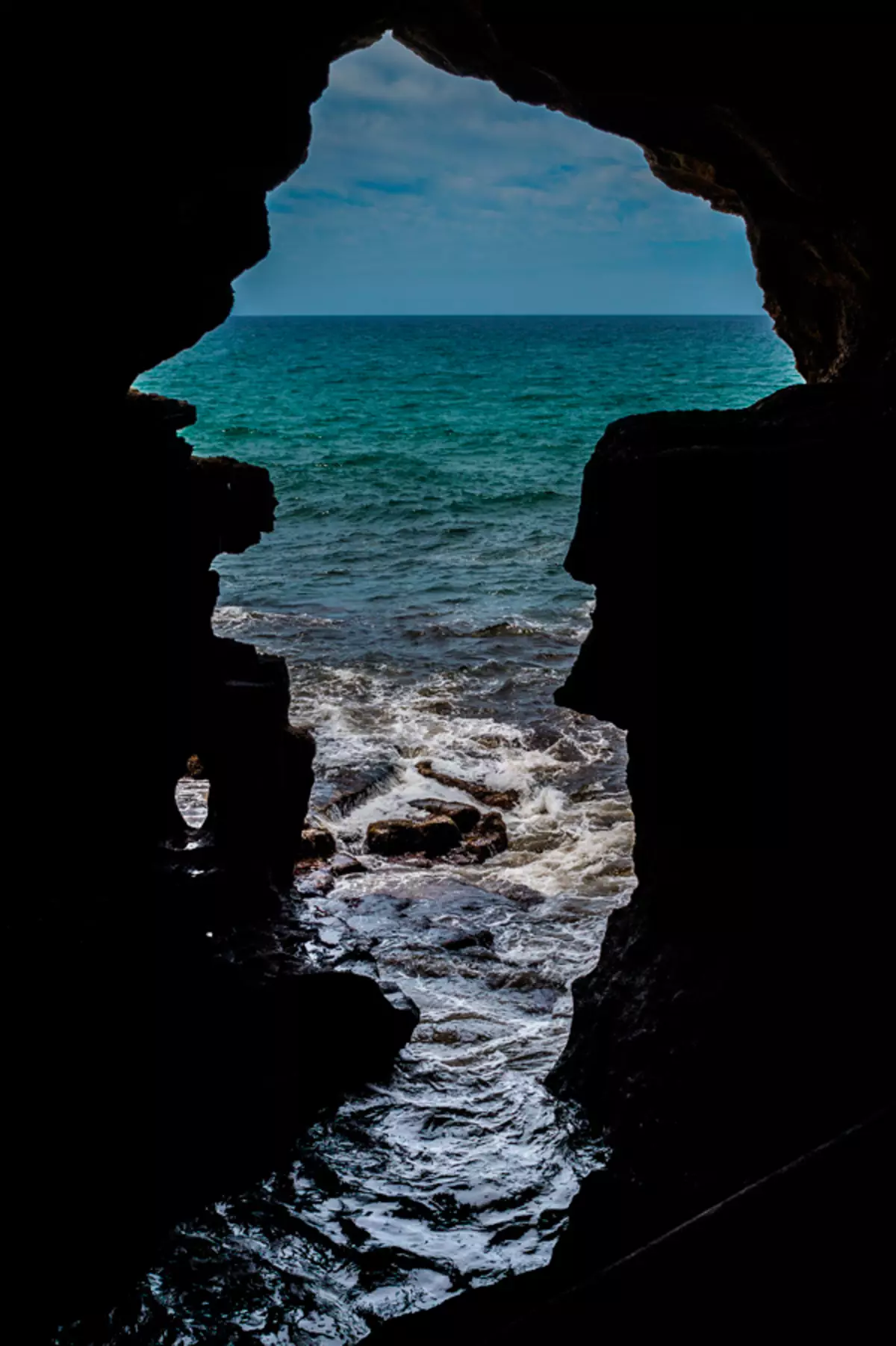Modern tangier with his sandy, but dirty beaches, where greedy to the Arabic flavor of tourists are caught by camels dressed in the costumes of Berbers, gives the impression of a two-year city. One half is Arabic, with narrow, raised to the skies of the streets, the steps of which are often removed by carpets. The second is modern, with high-rise buildings and supermarkets in Western style, looking like an average port city.
In Moroccan, Tangier were William Berrows and Henri Matisse. The first after staying here created a shocking anti-grade "Bare breakfast", which is able to fulfill only people with a very strong or, on the contrary, absolutely distorted psyche. Matisse spoke not so extravagantly: he wrote the picture "View from the window. Tangier. Its a copy today is exhibited in the hotel's room near the window, the view of which artist was inspired. The place is considered an important urban attraction, and at the same time and the symbol of the past times, when adventurers and artists who were tired of the painted old women came to Tangier through Spain. The last wave of immigration fell on the second half of the forties - the truth, then Tangier became a shelter not only Bohemia, but also unclean on the hand of Deltsov from neighboring Seville. Since 1923, the city was under international control, and officially part of Morocco was only October 29, 1956, after France refused its protectorate in the country.

Narrow streets with carpets here twisted with supermarkets
Photo: unsplash.com.
Visiting double
Travel guides advise tourists to settle on Medina. You should not believe. Yes, Medina Tanguir is definitely authentic, and it is curious to wander the hour - another, guessing, you will choose or not from the confusing labyrinth and determining my location only on the door, painted in blue, red or yellow. But this is the entertainment for an hour or another. But live on Medina is not too nice. Dirt from street trays, from which they sell fish, fruit and spices, sometimes forces to be seized in European order. Yes, and the smell of stray cats, koim here, the mood also does not improve.
It is best to go to the medina a tantarian early in the morning, when merchants have not had time to occupy her streets with their trolleys. If you take it into her upper part, find the inconspicuous tomb of Ibn Batutta there is the most famous Arab traveler who lived in the XIV century. At the age of twenty-one, he left the father's house and went to the pilgrimage to Mecca, but so carried away that he spent twenty-nine years in the way, overcame more than one hundred seventeen thousand and a half kilometers and visited forty-four countries, and outlined in labor "Gift contemplating the woundings of cities and miracles of wonder, "where there is a description of even the Golden Horde.
Particularly curious can be visited by the former Sultansky Palace Kasbah, and then drink Moroccan tea with mint in the historic cafe Hafa, where they loved the musicians of Rolling Stone and all the same William Berrows. True, with a sanitation in Hafa, things are, as elsewhere in Tangnaya: the waiters are spilled directly on the floor, and wandering cats are easily walking along the tables, but a stunning view of the Gibraltar Strait, which opens a cafe terrace, a worthy fee for inconvenience.

Arabic spices give dishes a special, exquisite taste
Photo: unsplash.com.
Myth-making
Researchers believe that the name Tangier is derived from the name of the Berber Divine Tinjis. But it is not exactly. But to understand why the caves are called Hercules, scientists are not necessary: it is enough to read the ancient Greek myths in the composure of Kun. It is believed that it was here that the hero of the ancient legends rested before committing his eleventh feat: the abduction of gold apples from the garden hesperid. Place - beauty incredible. The giant cave rooms seem to be the palaces of the underground palace, which grew in them the stalactites and stalagmites - petrified wars, and whispering the foam waves, which during the tide fill the grottoes, additionally enhances the feeling of meeting with a miracle. Near the caves there is another place, which is worth visiting fans of poetic species - Lighthouse at Cape Sparel. To come here is best at sunset, in order to observe how the alley of the sun is slowly sinking in the silver stroy of the Gibraltar Strait.

Walls of houses in the city of Shafishe are painted in blue - it is believed that it brings to God
Photo: pixabay.com/ru.
Mood color
The law acts in Morocco, according to which the walls of houses in some cities should be painted in strictly defined colors. The closest to the tierne is the white city of Asilach, the impression of toy scenery to one of the fairy tales "thousands and one night". It was built on the seashore. The outer walls of his neat houses are painted in white and covered with carpets, and on their windows, Mashrabias are painted - patterned Arab gratings. Among the tourists, Asilah is not particularly promoted, and it goes to the city for advantage: its streets are chisty, deserted, shops of shops to foreigners do not stick, and therefore no one and nothing prevents enjoying the beauty of this place.
Unfortunately, about the famous saffin, also known as Chefchauen, it is impossible to say. He is supported by the people from all over the world and died with souvenir shops, which significantly reduces the impression of the city, whose houses are painted in a million shades of Lazari. It is believed that the Jews were thought of a nontrivial designer decision, in the XV century, they expelled here along with Muslim Maslims from Castile and Andalusia. Setting up in the saffrene, they began to paint the walls of houses in blue and blue, believing that this simple ritual brings them to God. It worked! After some time, the population of the city was mixed, all of its inhabitants adopted Judaism, and soon Shefshauen acquired the status of a closed sacred city, which until 1912 did not allow infrared. The ban managed to bypass only the French priest Charles Eugene De Foucault: In 1883, he penetrated into the blue city, attached to rabbi.
Today, Shafishen is one of the main tourist centers of the country, and, if you know his story, this fact may seem like a mockery of fate. However, Moroccans are satisfied with the situation, because the Jewish population left the city long ago, and today he finally turned into a popular landmark that in modern economic realities - the gift of heaven.

Hercules caves: an antique hero rested here before committing the last feat
Photo: pixabay.com/ru.
Our advice to you ...
Moving around the country is the easiest way to "General Taxi", cars at any time of the day are sent from the Bus Station. In fact, you simply share payment for travel with other travelers, which allows you to save significantly. Thus, the cost of the "total taxi" from the tanger in Shafishe - only seventy dirham (seven euros) for one, and in Asilah - and at all twenty dirham (two euros).
Since Morocco is a Muslim country, it is impossible to buy alcohol anywhere, except for specialized bars for Europeans open during hotels. At the same time, the cities operate and purely men's bars, where girls and foreigners do not go, but are served in the establishments of this type only tea.
In the markets need to be bargained: if you do not be shy, you can reduce the price of your favorite carpet or ceramics in two, and even three times.
In Morocco, the most popular European languages are Spanish and French, but English here has much less local residents.
Be sure to try local mint tea with sugar - this is the main drink Morocco, which helps to endure the heat. The most popular national dish of the country is a tangent: meat or a bird with vegetables stewed in a ceramic pot of elongated shape.
